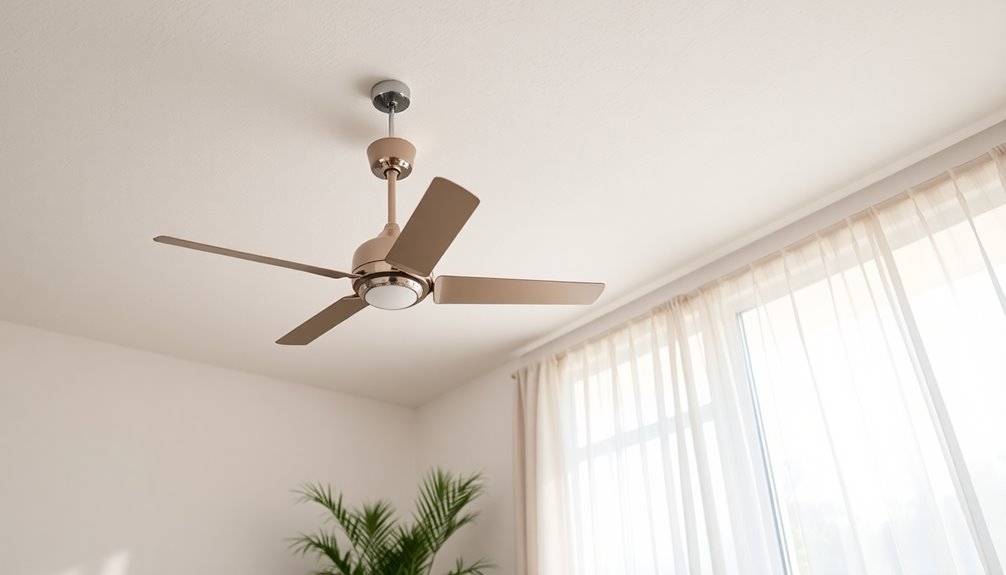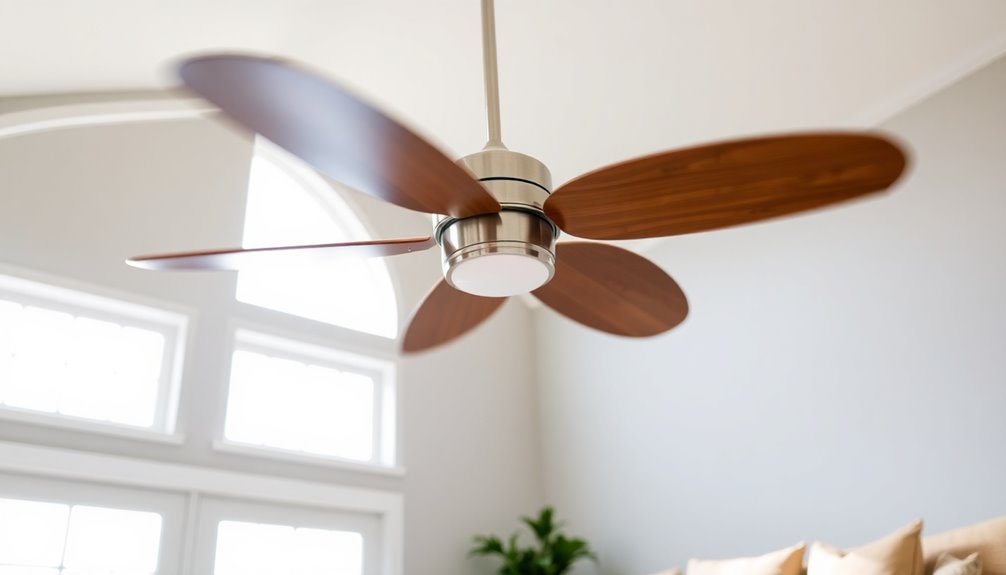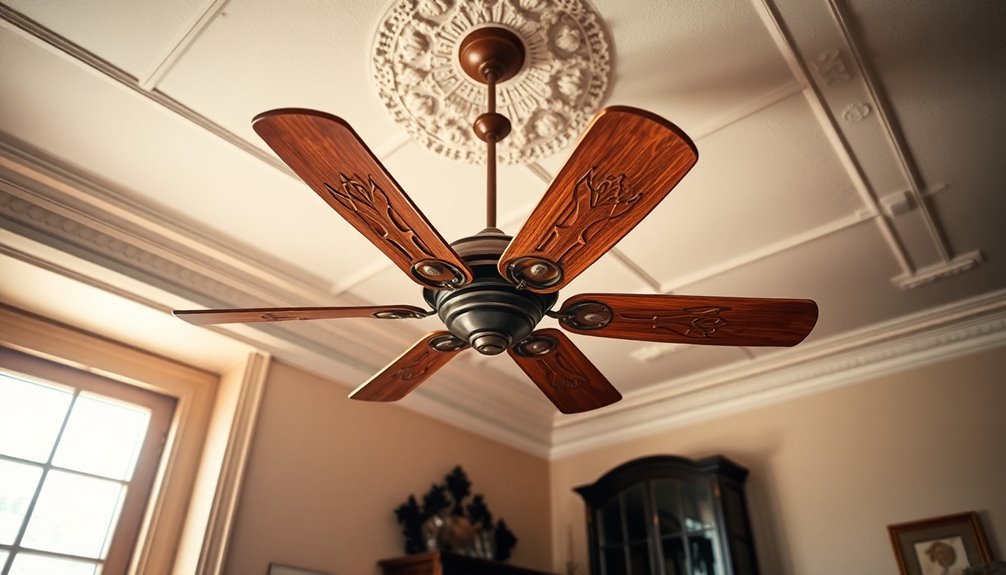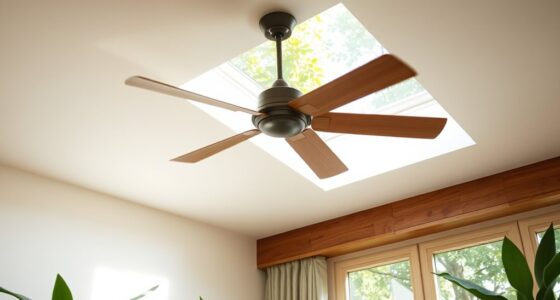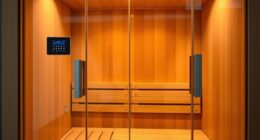A slope adapter is a helpful component that connects ceiling fans or ventilation ducts to angled or sloped ceilings, ensuring proper airflow and stability. It allows you to adjust the fan’s position, preventing wobbling, noise, and inefficient air circulation. Proper installation guarantees safety and better performance. If you want to learn how to select, install, and benefit from slope adapters for your ceiling, there’s more to discover below.
Key Takeaways
- Slope adapters connect ducts or fans to angled ceilings, ensuring airtight, seamless, and efficient airflow.
- They help align ceiling fans properly, preventing wobbling, noise, and uneven air distribution.
- Adjustable and fixed types suit different ceiling slopes, improving ventilation effectiveness and safety.
- Correct installation of slope adapters enhances fan stability, reduces vibrations, and prolongs lifespan.
- Proper use maximizes airflow, safety, and energy efficiency in sloped ceiling environments.
Understanding the Role of Slope Adapters in Ventilation Systems
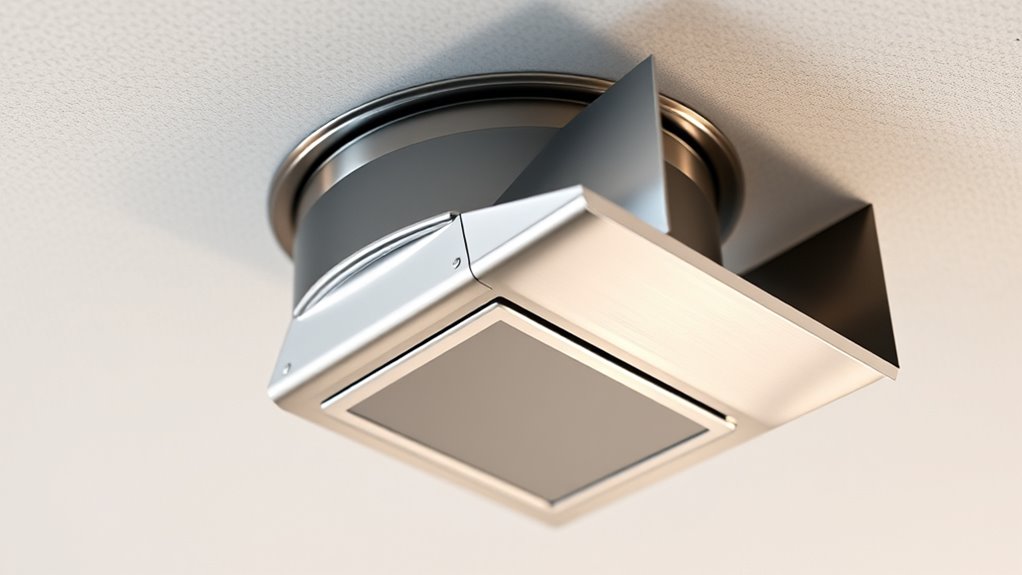
Slope adapters play a crucial role in ensuring proper airflow within ventilation systems. They help connect ducts to angled or sloped ceilings, making sure the ventilation remains effective and efficient. Without these adapters, airflow could be restricted or uneven, reducing ventilation efficiency and causing potential issues like moisture buildup or poor air quality. They also improve ceiling compatibility, allowing you to install fans or vents seamlessly on sloped surfaces. By creating a secure, airtight connection, slope adapters prevent leaks and ensure that air moves smoothly through the system. Your ventilation setup works better when these adapters are used correctly, maintaining ideal airflow regardless of ceiling angles. This makes your entire ventilation system more reliable, efficient, and easier to maintain.
How Slope Adapters Ensure Proper Fan Alignment on Angled Ceilings
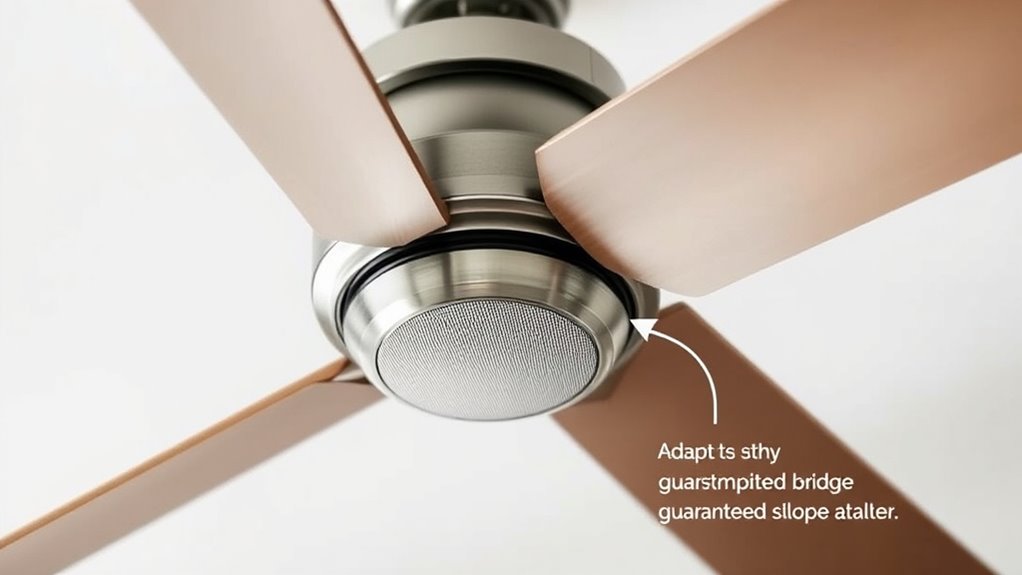
When installing fans on angled ceilings, ensuring proper alignment is key to ideal performance and safety. Slope adapters help achieve this by adjusting the fan’s mounting angle, ensuring it stays level despite the ceiling’s pitch. Proper alignment maintains consistent ceiling height, which is essential for airflow enhancement. When the fan is correctly positioned, it distributes air evenly, reducing dead spots and improving circulation. Without a slope adapter, the fan blades may tilt or wobble, decreasing efficiency and creating safety concerns. By compensating for the ceiling’s slope, slope adapters allow you to mount fans at the correct angle, ensuring maximum airflow and a balanced, secure installation. This adjustment ultimately enhances overall comfort and safety in your space. Additionally, understanding projector technology can help you select the right fan setup to optimize cooling and ventilation in home theater environments.
Types of Slope Adapters and How to Choose the Right One

Are you unsure which type of slope adapter best suits your ceiling and fan setup? There are several options tailored to different angles and ceiling types. Some adapters are adjustable, offering flexibility for varying slopes, while others are fixed for specific angles. When choosing, consider how the adapter impacts ventilation efficiency—an ideal fit ensures better air circulation. Also, think about ceiling aesthetics; a sleek, well-matched adapter can blend seamlessly with your decor. Material choices like metal or plastic affect durability and appearance. Measure your ceiling’s angle accurately, and select an adapter designed for that slope. By matching the right adapter to your ceiling’s pitch, you’ll enhance ventilation and maintain a polished, cohesive look in your space. Understanding AI in Education can also help in selecting smart tools for home improvement projects.
Installation Tips and Common Mistakes to Avoid

Proper installation of a slope adapter is essential for guaranteeing your ceiling fan functions safely and efficiently. First, make sure the fan height is correct; too low can be dangerous, and too high reduces airflow efficiency. Always double-check that the slope adapter is securely attached to the ceiling and the fan mount. Improper alignment can lead to wobbling and noise, disrupting airflow direction. Avoid rushing the installation—take your time to follow the manufacturer’s instructions carefully. Ensure the fan blades are level and that the airflow direction is set correctly for your needs. A common mistake is neglecting to balance the fan after installation, which can cause noise and uneven airflow. Proper setup guarantees maximum performance and longevity of your ceiling fan. Additionally, understanding the types of ceiling fan adapters can help you choose the right one for your specific ceiling slope.
Benefits of Using Slope Adapters for Safety and Efficiency
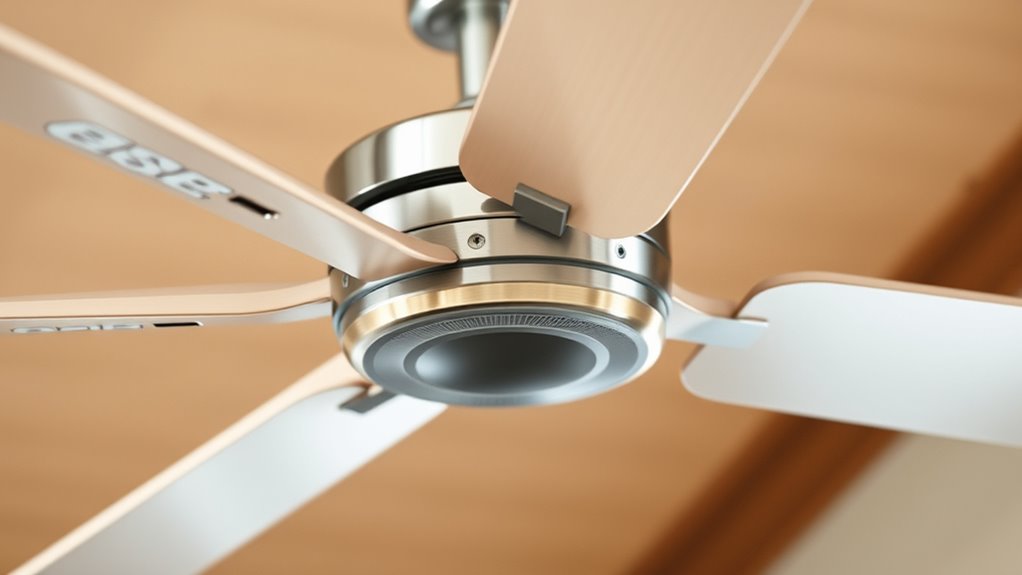
Using a slope adapter offers significant safety and efficiency benefits for your ceiling fan. It guarantees proper installation on angled ceilings, reducing the risk of wobbling or falling, which enhances ceiling fan safety. Additionally, a secure fit minimizes noise and vibrations, creating a quieter environment. Slope adapters also improve ventilation efficiency by allowing the fan blades to operate at ideal angles, maximizing airflow regardless of ceiling pitch. This leads to better circulation and more effective cooling or air distribution. By choosing the right slope adapter, you prevent strain on the fan’s motor and prolong its lifespan. Proper installation techniques are crucial for ensuring the fan operates optimally on sloped ceilings. Overall, using a slope adapter makes your ceiling fan safer, more reliable, and more efficient, ensuring you enjoy improved ventilation and peace of mind.
Frequently Asked Questions
Can Slope Adapters Be Used With All Ceiling Fan Models?
Slope adapters can’t be used with all ceiling fan models, as installation compatibility varies. You need to check your fan’s mounting system to see if it supports a slope adapter. Also, consider aesthetic considerations; some adapters may not match your fan’s style or ceiling design. Always verify manufacturer guidelines before purchasing or installing a slope adapter to guarantee proper fit and a seamless look.
Are Slope Adapters Suitable for Outdoor Ventilation Systems?
You’ll be glad to know slope adapters are suitable for outdoor ventilation systems, especially since over 60% of outdoor installations benefit from proper angle adjustments. They help with exterior installation by ensuring better airflow and can be weather-resistant if made from durable materials. Just double-check that the slope adapter you choose is rated for outdoor use, so it withstands weather conditions and maintains ventilation efficiency.
How Do Slope Adapters Affect Noise Levels of Ceiling Fans?
Slope adapters can impact your ceiling fan’s noise levels by potentially increasing noise if not installed properly, due to added installation challenges. They may cause slight vibrations or wobbling, which can lead to more noise. To reduce noise, guarantee a secure, precise installation. Properly fitted slope adapters help maintain noise reduction, but poor installation or incompatible adapters can make your fan louder and less efficient.
What Materials Are Commonly Used to Manufacture Slope Adapters?
You’ll find slope adapters are commonly made from durable materials like metal, plastic, or a combination of both. Metal options, such as steel or aluminum, offer great strength and longevity, reducing installation challenges. Plastic adapters are lightweight and easier to install but may be less durable over time. When choosing a material, consider the installation environment and the need for long-term durability to guarantee your ceiling fan functions smoothly.
Do Slope Adapters Require Regular Maintenance or Inspections?
You should regularly inspect your slope adapters to guarantee safety and peak performance. Maintenance involves checking for loose fittings, corrosion, or damage. Follow installation tips to keep them secure, and consider compatibility considerations to prevent issues. Routine inspections help identify wear early, prolonging lifespan and avoiding costly repairs. Keep an eye on connections and surfaces, and perform maintenance as needed to maintain proper ventilation and ceiling fan operation.
Conclusion
Think of slope adapters as the steady hand guiding your ceiling fan’s dance on a tilted stage. Without them, your fan struggles to perform safely and smoothly, risking imbalance and noise. But with the right adapter, it’s like giving your fan a sturdy platform—allowing it to spin gracefully and efficiently, no matter the angle. Embrace slope adapters as your home’s unsung heroes, ensuring safety, comfort, and peace of mind every day.


